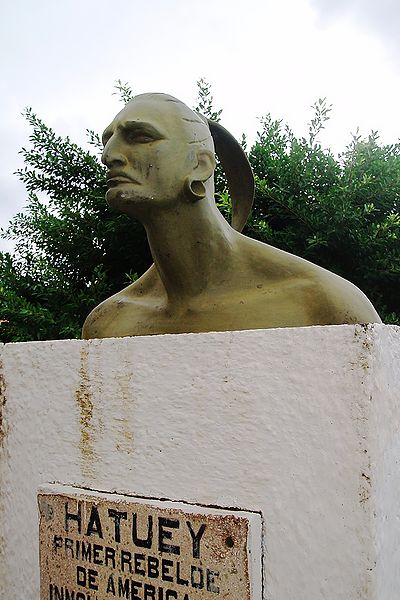Spanish conquest of Guatemala
In a protracted conflict during the Spanish colonization of the Americas, Spanish colonisers gradually incorporated the territory that became the modern country of Guatemala into the colonial Viceroyalty of New Spain. Before the conquest, this territory contained a number of competing Mesoamerican kingdoms, the majority of which were Maya. Many conquistadors viewed the Maya as "infidels" who needed to be forcefully converted and pacified, disregarding the achievements of their civilization. The first contact between the Maya and European explorers came in the early 16th century when a Spanish ship sailing from Panama to Santo Domingo was wrecked on the east coast of the Yucatán Peninsula in 1511. Several Spanish expeditions followed in 1517 and 1519, making landfall on various parts of the Yucatán coast. The Spanish conquest of the Maya was a prolonged affair; the Maya kingdoms resisted integration into the Spanish Empire with such tenacity that their defeat took almost two centuries.

Conquistador Pedro de Alvarado led the initial efforts to conquer Guatemala.
A page from the Lienzo de Tlaxcala, showing a Spanish conquistador accompanied by Tlaxcalan allies and a native porter
Representation of a battle between a native and a conquistador.
The Plains of Urbina, scene of a decisive battle against the Kʼicheʼ
Spanish colonization of the Americas
The Spanish colonization of the Americas began in 1493 on the Caribbean island of Hispaniola after the initial 1492 voyage of Genoese mariner Christopher Columbus under license from Queen Isabella I of Castile. These overseas territories of the Spanish Empire were under the jurisdiction of Crown of Castile until the last territory was lost in 1898. Spaniards saw the dense populations of indigenous peoples as an important economic resource and the territory claimed as potentially producing great wealth for individual Spaniards and the crown. Religion played an important role in the Spanish conquest and incorporation of indigenous peoples, bringing them into the Catholic Church peacefully or by force. The crown created civil and religious structures to administer the vast territory. Spanish men and women settled in greatest numbers where there were dense indigenous populations and the existence of valuable resources for extraction.
"The Discovery of America" (Johann Moritz Rugendas)
A 16th-century illustration by Flemish Protestant Theodor de Bry for Las Casas' A Short Account of the Destruction of the Indies depicting Taínos fighting back against Spaniards, showing cannibalism and forcing a Spaniard to swallow molten gold.
Theodor de Bry illustration depicting Spanish atrocities during the conquest of Hispaniola. Las Casas wrote about the cruelty of Spanish settlers: "They erected certain Gibbets, large, but low made, so that their feet almost reached the ground, every one of which was so ordered as to bear Thirteen Persons in Honour and Reverence (as they said blasphemously) of our Redeemer and his Twelve Apostles, under which they made a Fire to burn them to Ashes whilst hanging on them"
Bust of Hatuey, who rebelled against the Spanish








